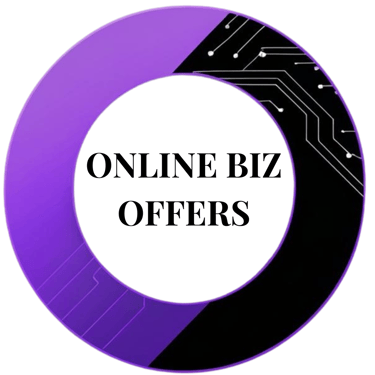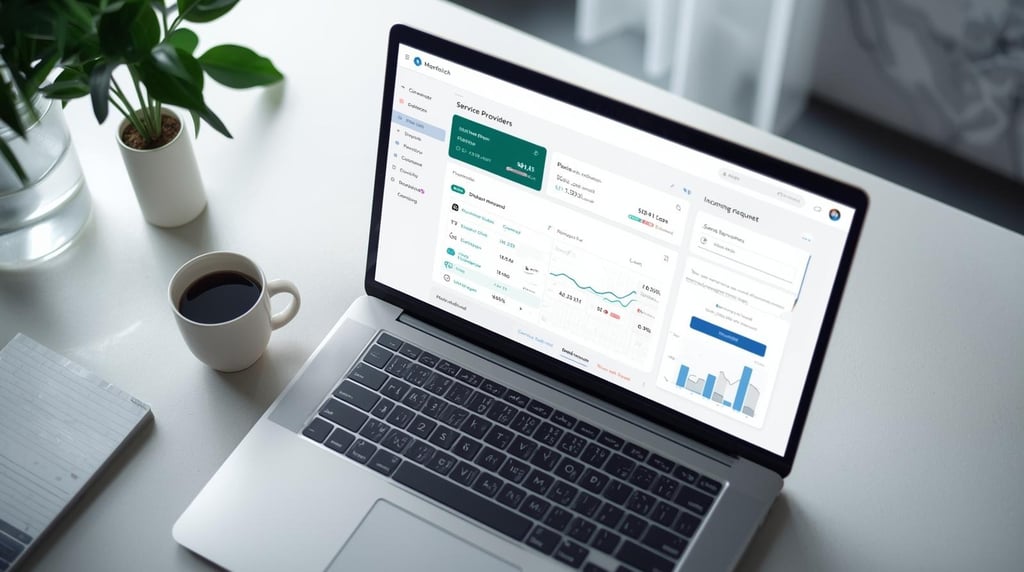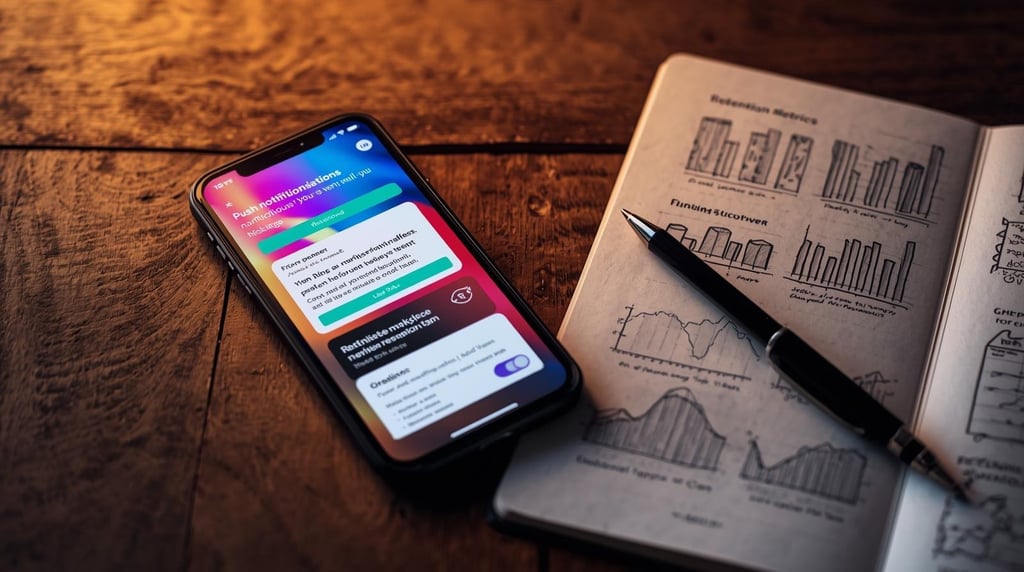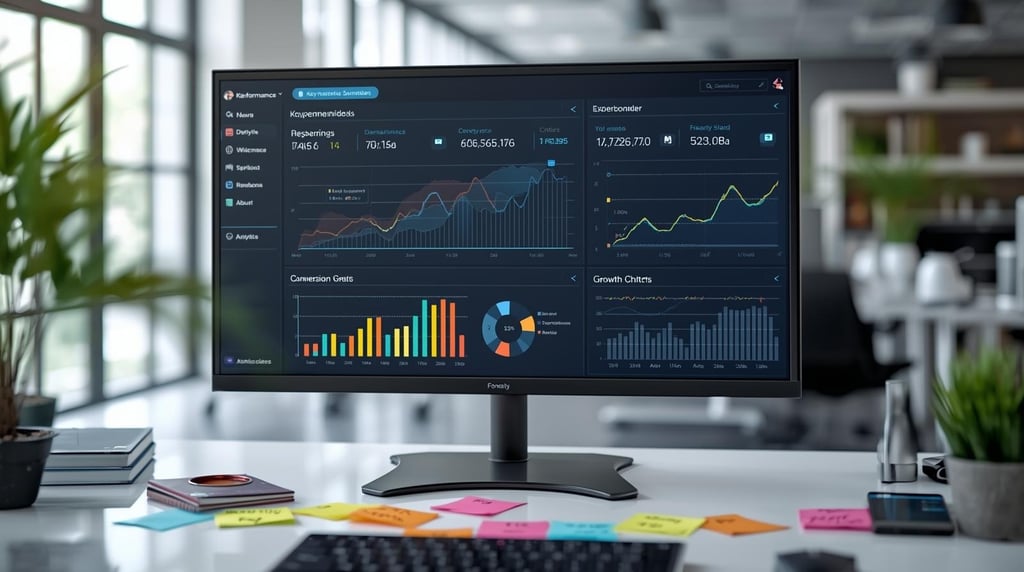Stop Scrolling, Start Creating ⚡ Visit Our Digital Store Now!
Building Your First Marketplace: Supply vs. Demand
Master the art of building your first marketplace with proven supply vs demand strategies. Learn how to balance both sides, acquire users, and scale profitably from day one.
DIGITAL MARKETINGE-COMMERCEAFFILIATE MARKETINGONLINE BUSINESS IDEASFREELANCINGEMAIL MARKETINGSOCIAL MEDIA
Eddy Enoma
10/25/202511 min read
Which Side to Build First and How to Scale Both
Introduction
Building your first marketplace feels like solving a puzzle where both pieces need to fit perfectly at the same time. You're not just launching a product; you're creating an entire ecosystem where buyers and sellers need each other to exist. And here's the tricky part: if you don't have enough suppliers, customers won't show up. But without customers, why would suppliers join?
This challenge is what makes building your first marketplace both exciting and nerve-wracking. The good news? Thousands of founders have cracked this code before you, and the patterns are clear once you know where to look.
Whether you're thinking about a home services platform, a freelance marketplace, or a local delivery service, the fundamental question remains the same: which side do you build first, and how do you keep both sides engaged long enough to reach critical mass?
Let's break down exactly how to tackle the supply vs. demand dilemma and build a marketplace that actually works.
Understanding the Chicken-and-Egg Problem
Every marketplace founder faces this reality check: you need supply to attract demand, but you need demand to attract supply. It's the classic chicken-and-egg problem, and it can paralyze your launch if you don't have a clear strategy.
The secret? One side is always harder to get than the other. Your job is to figure out which side that is and attack it first with everything you've got.
Think about Uber in its early days. They didn't wait for passengers to show up before recruiting drivers. They went out and convinced drivers to join with guaranteed hourly rates, even if they didn't get a single ride. Once they had drivers ready and waiting, getting passengers became much easier.
Here's what you need to identify:
The Constrained Side is typically characterized by:
Harder to acquire and convince
Requires more onboarding or verification
Has higher switching costs from current solutions
Needs training or education about your platform
Takes longer to see value
The Abundant Side usually features:
Easier to reach through marketing channels
Quick to understand the value proposition
Lower friction to sign up and transact
Motivated by an immediate pain point
Most marketplaces should focus on building the constrained side first. If you're building a cleaning marketplace, cleaners are probably your constraint. They need background checks, training, and trust before they'll commit time to your platform. Customers, on the other hand, just want their house cleaned and will try you if you have good cleaners available.
The Supply-Side Playbook: Getting Your First Providers
Your supply side is the engine of your marketplace. Without quality suppliers who are ready to deliver, your marketplace is just an empty website with good intentions.
Start With the Awkward Manual Outreach
Forget about scaling for a minute. Your first 20-50 suppliers won't come from ads or viral growth. They'll come from you personally reaching out, explaining your vision, and convincing them to take a chance.
Here's a simple outreach framework that works:
Step 1: Identify Your Ideal Early Suppliers. Look for people who are already providing the service independently. They're on Craigslist, Facebook groups, Instagram, or running their own small operations. These folks already have the skills; they just need more customers.
Step 2: Create Your Outreach Message. Keep it personal and value-focused:
"Hi [Name], I came across your [service] and was really impressed. I'm building a platform that connects [service providers] like you with local customers who are specifically looking for [your service]. We're launching in [area] next month, and I'd love to have you as one of our founding providers. Would you be open to a quick 15-minute call to learn more?"
Step 3: Make the First Transactions Risk-Free. Your early suppliers are taking a leap of faith. Remove every possible barrier:
Waive all fees for the first month or first 5 transactions
Offer guaranteed payment within 24 hours
Provide customer leads even if they don't convert
Handle all customer service issues yourself
Onboarding That Actually Works
Once someone says yes, don't lose them in a complicated signup flow. Your onboarding should take less than 10 minutes and collect only what's necessary to make the first match.
The essentials:
Basic contact information
Service area and availability
Pricing or rate expectations
Payment details (can come later)
One verification checkpoint (if required)
Everything else can wait until after they've completed their first successful transaction. That's when they're emotionally invested and more likely to complete detailed profiles, add photos, or go through additional verification.
Tools like Tidio can help you provide real-time chat support during onboarding, answering questions immediately before people drop off. And if you need to A/B test different onboarding flows, A/B Testing AI can help you figure out which approach converts better.
The Incentive Structure That Seeds Supply
In the beginning, you're asking suppliers to trust an unproven platform. Incentives bridge that trust gap.
Popular supply-side incentives:
Sign-up bonuses: Pay $50-100 just for completing their profile and being ready to accept jobs
First transaction guarantee: Promise a minimum payment for their first job, even if the customer cancels
Exclusive territory: Give early providers exclusive rights to certain neighborhoods or customer segments for 90 days
Revenue share bonuses: Escalating bonuses as they complete more transactions (5 jobs = $50 bonus, 20 jobs = $200 bonus)
The math here is simple: if your customer lifetime value is $500 and your customer acquisition cost is $100, spending $150 to acquire and activate a supplier who will serve 10+ customers is an absolute steal.
The Demand-Side Playbook: Bringing in Your First Customers
Once you have a core group of reliable suppliers, it's time to flip the switch and focus on demand. But here's the thing: you don't need thousands of customers at launch. You need dozens of the right customers who will actually transact and come back.
Know Exactly Who Your Early Adopter Is
Your first customers aren't "everyone who might need this service." They're a specific subset of people who are:
Actively experiencing the pain point right now
Unsatisfied with current alternatives
Willing to try new solutions
Easy to reach through specific channels
For a home cleaning marketplace targeting busy professionals, your early adopter might be: "30-40 year old dual-income households in specific zip codes who currently use Handy or TaskRabbit but complain about inconsistent quality."
That specificity lets you craft messages that land.
Your First Customer Acquisition Channels
The Manual, Unscalable Stuff (Do This First)
Local community boards and Facebook groups: Join neighborhood groups and answer questions helpfully. Don't spam, but when someone asks, "Does anyone know a good cleaner?", you've got the perfect answer.
Partnership with complementary businesses: Real estate agents, property managers, and moving companies all have customers who need services. Offer them a referral fee.
Waitlist and pre-launch buzz: Use tools like Magnetify to capture leads before you even launch. Build anticipation.
Direct outreach to past customers of competitors: Find people who've left reviews on competitor platforms and offer them a better deal for trying yours.
The Scalable Stuff (Do This Once Manual Works)
Paid search ads: Target high-intent keywords like "house cleaner near me" or "same-day cleaning service."
Social media ads: Facebook and Instagram, targeting specific demographics in your launch area.
Content marketing: Helpful blog posts and local SEO that capture search traffic.
When you're ready to test different ad variations, A/B Testing AI can help you optimize your messaging quickly. And Persuva can help you write persuasive ad copy that actually converts.
Landing Page That Converts Cold Traffic
Your landing page has one job: convince someone to book their first transaction or join your waitlist.
The formula that works:
Headline: Clear value proposition in 10 words or fewer: "Book a trusted local cleaner in 60 seconds"
Subheadline: Address the main objection or expand on the benefit "Background-checked professionals. Satisfaction guaranteed. Starting at $29/hour."
Social proof: Even with 5 customers, you can show testimonials. "Finally, a cleaning service that shows up on time!" - Jennifer M.
Clear call-to-action: One primary button, bright color, action-oriented text "Book Your First Cleaning"
Trust signals: What makes you safe and reliable?
Verified providers
Instant booking
Secure payment
Money-back guarantee
Test different variations using A/B Testing AI to see which headline or CTA drives more conversions. Small changes in copy can double your conversion rate.
Retention: Turning First-Time Users Into Repeat Customers
Getting someone to transact once is hard. Getting them to come back is where the real business is built. Marketplace retention is different from SaaS retention because you're managing relationships on both sides.
Retention tactics that work:
Post-transaction follow-up: Send a personalized message 24 hours after service, asking about their experience. Use Tidio to automate this while keeping it personal.
Rebooking reminders: If someone books a one-time cleaning, remind them 2 weeks later that they can schedule recurring service.
Loyalty programs: Offer every 5th booking at 20% off, or give credits for referrals.
Favorite provider feature: Let customers save their favorite suppliers and book with them directly next time.
For more tactics on keeping customers engaged long-term, check out The Retention Playbook: Keeping Customers in Subscription Models.
The Matching Strategy: Connecting Supply and Demand
How you connect buyers and sellers determines whether your marketplace feels magical or frustrating. There are three basic matching models, and your choice depends on your vertical, transaction size, and how much trust is required.
1. Open Marketplace (Listings Model)
Suppliers create profiles, and customers browse and choose who they want to work with.
Best for: Services where customer preferences vary (design, photography, consulting)
Pros: Easy to build, customers feel in control, works with fewer suppliers
Cons: Analysis paralysis, race to the bottom on price, ghosting
2. Algorithmic Matching
Your platform automatically matches customers with the best available supplier based on location, availability, ratings, and preferences.
Best for: Commoditized services where speed matters (delivery, rides, basic home services)
Pros: Fast, frictionless, ensures even distribution of work
Cons: Requires sophisticated tech, fewer customer choices
3. Concierge/Curated Matching
You (or your team) manually match each customer with the right supplier.
Best for: High-value, complex services requiring customization (home renovation, legal services)
Pros: Highest quality matches, builds trust quickly, less technology needed at launch
Cons: Not scalable, labor-intensive, requires expertise
Pro tip: Start with concierge matching, even if you plan to automate later. It teaches you exactly what good matches look like, which you'll need to train an algorithm anyway.
Reducing Friction at Every Step
Every click, form field, and decision point is a chance for people to abandon your marketplace. Here's how to minimize friction:
For customers:
Guest checkout (collect email only, account creation later)
Instant quotes without phone calls
Transparent pricing before booking
One-click rebooking
For suppliers:
Mobile-friendly job acceptance (most suppliers are on phones)
Instant notifications of new opportunities
Simple calendar integration
Quick payment processing
Communication tools like Manychat can help you automate initial responses and qualify leads before they even hit your platform, while Tidio's AI Agent can answer common questions 24/7 without human intervention.
Measuring What Matters: Your Marketplace KPI Dashboard
You can't improve what you don't measure. But marketplaces generate so much data that it's easy to drown in metrics that don't actually matter.
Here are the 10 metrics you should watch religiously:
Supply-Side Metrics:
Active suppliers: How many are ready to accept jobs each week?
Supply utilization: What percentage of your suppliers complete at least one transaction per week?
Average fulfillment time: How quickly do suppliers respond and complete jobs?
Supplier churn: What percentage quit after their first month?
Demand-Side Metrics:
5. Booking conversion rate: Of people who visit your site, what percentage actually book?
6. Repeat booking rate: What percentage of customers book a second time within 30 days?
7. Customer lifetime value: How much revenue does the average customer generate?
8. Customer acquisition cost: How much do you spend to acquire each customer? (Learn more about calculating this properly here)
Marketplace Health Metrics:
9. Match rate: What percentage of booking requests successfully match with a supplier?
10. Gross Merchandise Value (GMV): Total value of all transactions flowing through your platform
Red flags to watch for:
Match rate below 70% = Not enough supply
Repeat booking rate below 20% = Quality or experience issues
Supply utilization below 40% = Too much supply, not enough demand
CAC higher than 30% of LTV = Unit economics don't work
Use tools like Rewardful to track referral program performance and see which customers are bringing in the most new business.
Your First 90 Days: A Practical Roadmap
Here's exactly what to focus on in your first three months:
Days 1-30: Proof of Concept
Goal: Complete 20 successful transactions with manual matching
Recruit 10–15 suppliers personally
Spend $0 on paid ads
Focus on friends, family, and the local community for first customers
Manually handle every step of onboarding and matching
Success metric: 80%+ customer satisfaction, 50%+ suppliers complete multiple jobs
Days 31-60: Initial Optimization
Goal: Reach 100 total transactions
Refine your onboarding based on feedback
Launch a simple referral program
Start small paid advertising tests ($500-1000 budget)
Implement basic automation for notifications and payments
Success metric: 30%+ customers book again, CAC under $50
Days 61-90: Early Scaling
Goal: Hit $10K in GMV
Expand supplier base to 30–50 providers
Double down on your best-performing acquisition channel
Build basic retention campaigns (email, SMS)
Implement matching automation or improve the manual process
Success metric: Profitable unit economics, 20%+ month-over-month growth
Remember: these timelines are aggressive. If you're tracking 10-20% behind, that's normal. If you're 50%+ behind, you probably need to rethink your approach to either supply or demand.
Common Mistakes (And How to Avoid Them)
Mistake #1: Building Features Instead of Proving Demand. You don't need a perfect app or website. You need proof that people will actually transact. Start with a simple landing page, manual matching, and basic payment processing.
Mistake #2: Treating Both Sides Equally. One side is always the constraint. Figure out which one, and pour 80% of your resources into solving that side first.
Mistake #3: Ignoring Unit Economics Too Long. If your CAC is $100 and your average customer only generates $80 in lifetime value, you don't have a business. You have an expensive hobby. Calculate these numbers early and ruthlessly optimize them.
Mistake #4: Scaling Before You Have Product-Market Fit. That feeling of "if we just had more customers, everything would work" is usually wrong. Fix your match rate, retention, and satisfaction scores first. Then scale.
Mistake #5: Not Talking to Your Users Enough. Your suppliers and customers are telling you exactly what's broken and what's working. You just need to ask. Schedule 5 user interviews every single week in your first 90 days.
Conclusion: Trust the Process
Building your first marketplace isn't a sprint; it's a methodical process of testing, learning, and iterating. Every successful marketplace you admire today started exactly where you are now: with zero users, a big idea, and a lot of uncertainty.
The difference between the ones that made it and the ones that didn't? They figured out their constraint, solved it creatively, and didn't give up when growth was slow.
Focus ruthlessly on the basics:
Get supply OR demand (whichever is harder) to a critical mass
Create an experience that people genuinely love
Measure everything that matters
Iterate quickly based on real feedback
You don't need venture capital, a huge team, or a revolutionary idea. You need clarity on your strategy, discipline in execution, and the patience to build something valuable one transaction at a time.
Now stop reading and go have your first conversation with a potential supplier or customer. That's where the real work begins.
Additional Resources:
Want to dive deeper into related topics? Check out these guides:
How to Calculate Your Real Customer Acquisition Cost - Master the economics that make or break your marketplace
The Retention Playbook: Keeping Customers in Subscription Models - Advanced tactics for keeping both sides engaged long-term
Tools to Accelerate Your Marketplace:
Customer Communication: Tidio for live chat and AI-powered support
A/B Testing: A/B Testing AI to optimize every element of your funnel
Lead Capture: Magnetify to build your waitlist before launch
Persuasive Copy: Persuva to write conversion-focused messaging
Referral Programs: Rewardful to turn customers into advocates
LinkedIn Outreach: Virly to find and engage B2B suppliers
The tools are here. The playbook is clear. Now it's your turn to build something that brings supply and demand together in a way that creates real value for both sides.
Good luck, and remember: every expert marketplace founder started with zero users and figured it out one transaction at a time. You can too.
Get the next playbook in your inbox. Join our newsletter.
Subscribe for Exclusive Tips & Updates. Enter Your Email Below!



Get the latest strategies to create, automate, and monetize with AI, content, and digital marketing straight to your inbox!
🔒 We respect your privacy. Your email is safe with us. Unsubscribe anytime.
Address
Sporerweg 16
94234 Viechtach, Germany
Contacts Us
(049) 170 499 6273
Subscribe to our newsletter
© 2025 Onlinebizoffers. All rights reserved.










